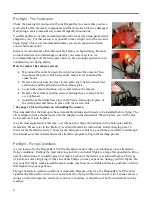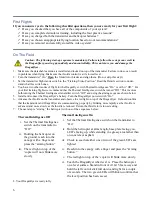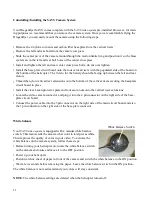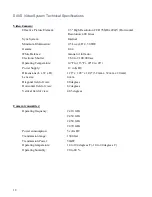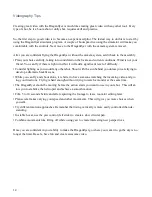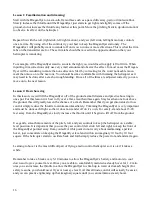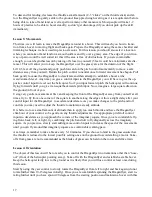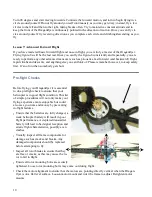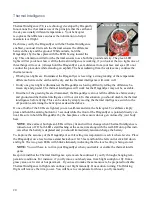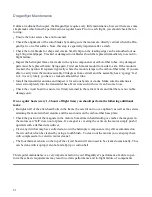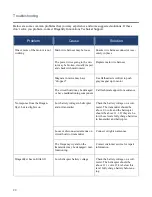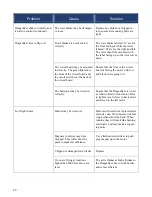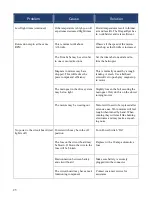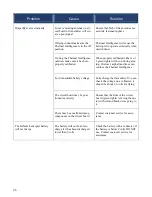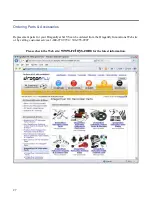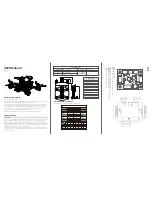
18
orientation. It will help if you turn so you are facing in the same direction as the front of the Draganflyer
and watching it over your shoulder. Remember to take a break every 510 minutes.
Once you master hovering the Draganflyer with it turned 90 degrees, you can think about beginning to
practice “nosein” flight. To do this, you will be best served to repeat lessons 1, 2, and 3, but complete
all these with the front of the Draganflyer turned towards yourself. The roll and pitch controls will be
reversed in this orientation, so don’t rush! Learning to fly “nosein” will be just like learning to fly all
over again, but don’t get discouraged! Try to practice a few minutes of nosein each time you fly the
Draganflyer, and continue through the rest of the flying lessons.
Lesson 5: Climbs and Descents
Now you are ready to begin flying the Draganflyer at higher altitudes. The helicopter does not know it
has gone any higher, so the only real factor here is your own nerves. Climbing is easy; just add power
and it will smoothly climb up. Reduce the throttle setting to hover, and the climb will stop naturally
(remember, small movements are essential). Descending is more difficult, because the Draganflyer
forces air downwards to generate the lift it needs to fly(this is called downwash), as you descend
vertically, you will pass into air that is moving downwards, causing the helicopter to accelerate as it
descends. To counter this, you can either begin the descent and then add small amounts of power as
necessary to offset the downwards acceleration, or you can descend while moving the Draganflyer
forwards, backwards, left, or right. Descending in this manner will allow you to fly outside of the
downwash the helicopter generates. Set up for this lesson by first making sure your batteries are fully
charged (because you will now be flying higher above the ground, the risk is greater if the batteries die
unexpectedly).
Stand well away, as you will be passing through your eye level, and make sure any spectators are also a
safe distance away. Start by establishing a hover, then add power to climb to just above your head.
Reduce power to stop the climb, settle back into a hover, then slowly descend. Keep the front of the
Draganflyer away from you at all times. Repeat this process until you can climb and descend
comfortably.
Now you can begin climbing higher and faster. However keep in mind that the higher you fly, the
greater the risk of causing damage in a crash. As well, you should keep the remaining power in the
battery in mind, as you will be drawing more power from the flight battery by climbing repeatedly.
CONGRATULATIONS
. You have now learned to fly the Draganflyer. The abilities to transition from
a hover to a climb or sideways movement while maintaining directional control are the essential skills
needed to fly. You should now be able to take off, land, and fly around at will. Keep practicing, you will
soon be flying just like the professional pilots in our videos!
There are two additional lessons that will teach you to control the Draganflyer while in forward flight.
These are advanced topics, and you should be very comfortable with flying around rapidly, climbing,
and descending before you attempt either of these. You may also want to go back over the previous
lessons except with the helicopter in “active” mode rather than “training/video” mode.
Lesson 6: Introduction to Forward Flight
Anytime the Draganflyer is moving horizontally through the air, it is considered forward flight; this
could be forwards, backwards, left or right. This is an advanced topic, so this lesson will be fairly brief.
Select a large, open area, away from anything or anybody that the Draganflyer might cause damage to.
Prepare for flight and trim the helicopter. Begin by establishing a hover just above your head and at least
2530 feet away from yourself.

